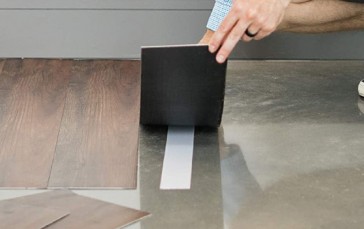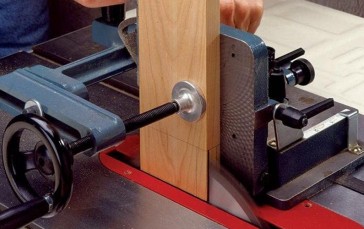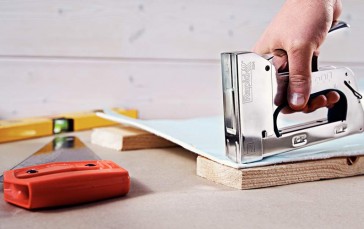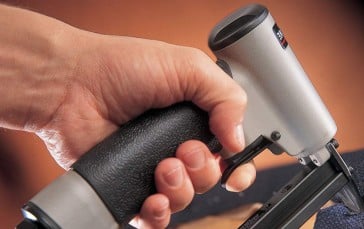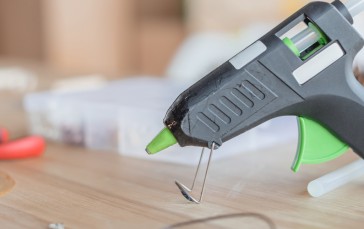STOP! Do not close this window because it looks like this is an article about the tape. I mean, yes, technically it is. But from what we can tell, calling Forj’s Utility Tape “tape” is like saying absinthe gets you “drunk.” There’s quite a bit more to it than that.
I know how you feel; I almost swiped Forj Utility Tape off the news desk as soon as I saw it. But then I started reading and watching videos about it. And this is what I found out.
“Get in Loser, We’re Reinventing Tape”: Forj Utility Tape Concept
Forj Utility Tape is actually a thermoplastic tape-ribbon. What is that? I proceeded to YouTube to find out. In the first 4 seconds of its promo video, Forj hit me right between the eyes with an audacious implication. “Introducing Forj,” said the stereotypical, I-mean-business narrator, “the next step in material evolution.”
The next step in material evolution? They had my attention but what could that even mean? Forj explains enough to make it tantalizing. Its product appears to be simply a polymer ribbon that resists shear force like crazy. Forj claims over 1000 pounds of pull strength resistance. At one point, the video shows a bulldozer lifting a concrete barricade with a chain supposedly repaired with Forj tape. I will say that despite repeatedly telling my computer to isolate pixels and “enhance,” I couldn’t confirm the veracity of that particular test.
However, I did watch a man (elsewhere on YouTube) repair a fishing pole with it. I know that’s a far cry from a bulldozer lifting a massive concrete block. Believe it or not, it’s as close as I found for video evidence. The problem is that the two tests are not referential: the bulldozer test would be a pull test; the fishing pole test is a bending test.
The pole bends at 90 degrees with Forj tape applied, but does not break. The user seems unimpressed.
So what does it all mean?
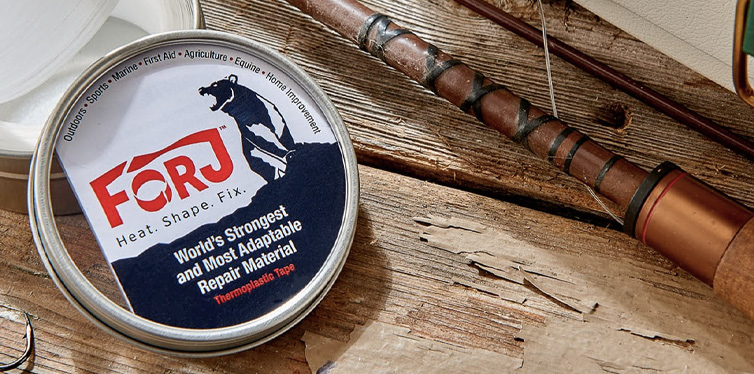
What It All Means: Finding Forj Tape’s Purpose
According to ongoing research, I can’t verify that anyone has ever actually lifted a concrete block weighing thousands of pounds using Forj tape and a bulldozer. But it does appear to have plenty of other utility.
Heating, shaping, and cooling the tape according to the instructions appears to create a strong chemical bond. The majority of reporting users report satisfaction. Projects range from repairing a plastic windshield washer fluid tank to grafting a piece back onto a mountain bike fork.
The stated 1000-pound pull strength looks yet to be confirmed, and I don’t know if “the next step in material evolution” exactly applies. But for a variety of purposes, the thermoplastic tape-ribbon does look legit.
Verdict and Purchasing
If the “material” Forj claims to evolve with its thermoplastic tape is duct tape, I think the claim is right on. I’ve witnessed all kinds of attempted duct tape repairs during my rowdy years of road life and improvisation. Nearly all of them have failed. But so far, Forj has not set up a damaging disparity between its product’s capabilities and its customers’ expectations.
It’s more expensive than duct tape at $20 MSRP per roll. But again, it stands a good chance to work for medium-duty projects; and even if it doesn’t, it’s a pretty cheap science experiment.
Learn more at Huckberry.com.



